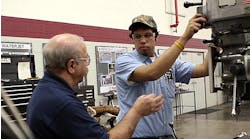The U.S. Bureau of Labor Statistics February 2016 employment survey revealed that 59.8% of Americans aged 16 and older held jobs during last month, a recent high point in the ‘employment-to-population’ trend that BLS tracks, though still far below the rates many of us had been accustomed to during earlier decades. Through most of the 1990s, the figure ranged between 62% and 64%; the recent peak was 64.7% in April 2000. In the first decade of this century, the range slipped to 60-63%, and then the figure plunged after 2007 – responding to factors that I’m sure I do not need to recap. The point in general is that about 40% of the individuals 16 and older are not working, and so are not contributing financially to the overall economic picture.
Particularly since 2007, the distinction between working (contributors) and unemployed (non-contributors) has developed a more adversarial edge, and this has inevitably been exploited as a political issue, which has made understanding of the circumstances even more difficult. Many people are working at jobs below their training or qualification. Many are performing roles once filled by two or more workers.
The February BLS report can be seen as good news in the post-recession context — it recorded 555,000 newly employed, maintaining a three-month trend — but the context remains: we have an economic system in which the interests of employers and employees (or potential employees) no longer coincide. It was always the case that some employers would seek to get more for less from workers, but there was a point (a monetary figure) at which the two interests could meet.
Now, it must be acknowledged that paying people to work is viewed as a defect of a business plan. If a process can be automated, it will be. If a service provider can induce a customer to perform his or her own transaction, it will be done. Typically, these are not portrayed as labor-cost-saving changes: plants introduce robots for the sake of consistency and/or safety, and that’s proper. Retailers implement self-service or automated checkout for the sake of efficiency, which is understandable also.
Employers also will emphasize the need for trained and/or qualified individuals to conduct complex or demanding tasks – and this too is a factor that must be acknowledged in a variety of circumstances. Still, notwithstanding the trend suggested by the February report, the jobs being created invariably require little education or skill, and often are provided with training for the specific role.
At the same time, there are job titles in the BLS report with higher earning potential that are unlikely to exist beyond the current decade, including:
Bill and account collectors; bookkeeping, accounting, and auditing clerks; chemical equipment operators and tenders; computer operators; mechanical drafters; molding, coremaking, and casting machine workers; non-postal mail clerks and mail machine operators; office machine operators (except computer); postal service mail sorters, processors, and processing machine operators; print binding and finishing workers; printing press operators; procurement clerks; surveying and mapping technicians; switchboard operators, including answering service; tellers; travel agents; and word processors and typists. For the purposes of financial research, these are people who will simply disappear.
Of course, it was the inclusion of molding, coremaking, and casting machine operators on this list that drew my attention, and I cannot say I am surprised. Those are difficult and demanding jobs that, even today, are hard for foundries to fill. All the factors regarding safety and consistency apply in these cases. I also know the technological trends that are changing workplaces, and changing employment needs.
Reading economic trends and drawing conclusions is difficult and prone to error. Building political arguments from them is reckless. However, what I read in the employment data is the evidence of an economic system that no longer knows how to value people, and people who no longer know what to do with themselves.









